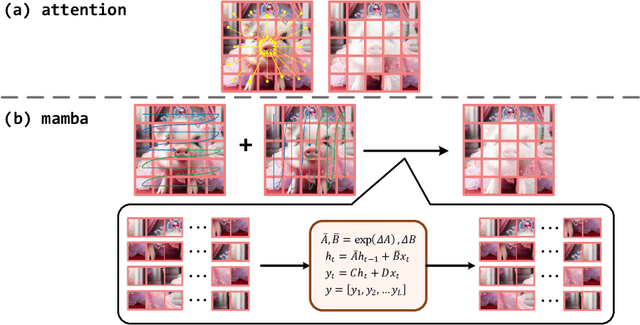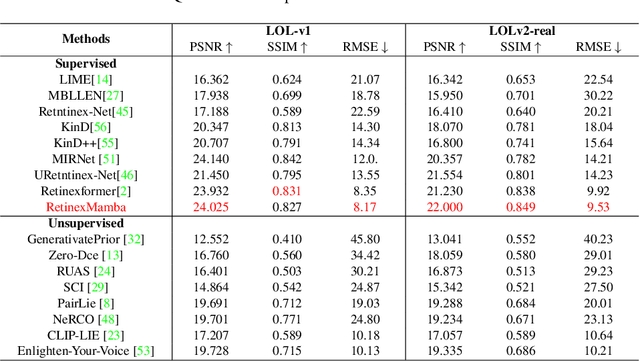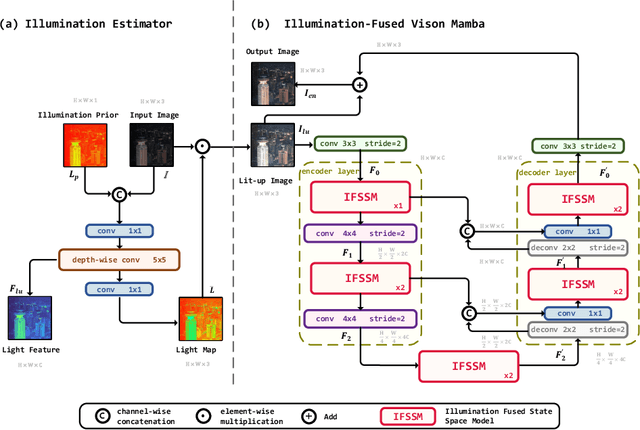Jiesong Bai
LensNet: An End-to-End Learning Framework for Empirical Point Spread Function Modeling and Lensless Imaging Reconstruction
May 03, 2025Abstract:Lensless imaging stands out as a promising alternative to conventional lens-based systems, particularly in scenarios demanding ultracompact form factors and cost-effective architectures. However, such systems are fundamentally governed by the Point Spread Function (PSF), which dictates how a point source contributes to the final captured signal. Traditional lensless techniques often require explicit calibrations and extensive pre-processing, relying on static or approximate PSF models. These rigid strategies can result in limited adaptability to real-world challenges, including noise, system imperfections, and dynamic scene variations, thus impeding high-fidelity reconstruction. In this paper, we propose LensNet, an end-to-end deep learning framework that integrates spatial-domain and frequency-domain representations in a unified pipeline. Central to our approach is a learnable Coded Mask Simulator (CMS) that enables dynamic, data-driven estimation of the PSF during training, effectively mitigating the shortcomings of fixed or sparsely calibrated kernels. By embedding a Wiener filtering component, LensNet refines global structure and restores fine-scale details, thus alleviating the dependency on multiple handcrafted pre-processing steps. Extensive experiments demonstrate LensNet's robust performance and superior reconstruction quality compared to state-of-the-art methods, particularly in preserving high-frequency details and attenuating noise. The proposed framework establishes a novel convergence between physics-based modeling and data-driven learning, paving the way for more accurate, flexible, and practical lensless imaging solutions for applications ranging from miniature sensors to medical diagnostics. The link of code is https://github.com/baijiesong/Lensnet.
DLEN: Dual Branch of Transformer for Low-Light Image Enhancement in Dual Domains
Jan 21, 2025



Abstract:Low-light image enhancement (LLE) aims to improve the visual quality of images captured in poorly lit conditions, which often suffer from low brightness, low contrast, noise, and color distortions. These issues hinder the performance of computer vision tasks such as object detection, facial recognition, and autonomous driving.Traditional enhancement techniques, such as multi-scale fusion and histogram equalization, fail to preserve fine details and often struggle with maintaining the natural appearance of enhanced images under complex lighting conditions. Although the Retinex theory provides a foundation for image decomposition, it often amplifies noise, leading to suboptimal image quality. In this paper, we propose the Dual Light Enhance Network (DLEN), a novel architecture that incorporates two distinct attention mechanisms, considering both spatial and frequency domains. Our model introduces a learnable wavelet transform module in the illumination estimation phase, preserving high- and low-frequency components to enhance edge and texture details. Additionally, we design a dual-branch structure that leverages the power of the Transformer architecture to enhance both the illumination and structural components of the image.Through extensive experiments, our model outperforms state-of-the-art methods on standard benchmarks.Code is available here: https://github.com/LaLaLoXX/DLEN
Retinexmamba: Retinex-based Mamba for Low-light Image Enhancement
May 06, 2024



Abstract:In the field of low-light image enhancement, both traditional Retinex methods and advanced deep learning techniques such as Retinexformer have shown distinct advantages and limitations. Traditional Retinex methods, designed to mimic the human eye's perception of brightness and color, decompose images into illumination and reflection components but struggle with noise management and detail preservation under low light conditions. Retinexformer enhances illumination estimation through traditional self-attention mechanisms, but faces challenges with insufficient interpretability and suboptimal enhancement effects. To overcome these limitations, this paper introduces the RetinexMamba architecture. RetinexMamba not only captures the physical intuitiveness of traditional Retinex methods but also integrates the deep learning framework of Retinexformer, leveraging the computational efficiency of State Space Models (SSMs) to enhance processing speed. This architecture features innovative illumination estimators and damage restorer mechanisms that maintain image quality during enhancement. Moreover, RetinexMamba replaces the IG-MSA (Illumination-Guided Multi-Head Attention) in Retinexformer with a Fused-Attention mechanism, improving the model's interpretability. Experimental evaluations on the LOL dataset show that RetinexMamba outperforms existing deep learning approaches based on Retinex theory in both quantitative and qualitative metrics, confirming its effectiveness and superiority in enhancing low-light images.
 Add to Chrome
Add to Chrome Add to Firefox
Add to Firefox Add to Edge
Add to Edge